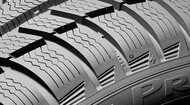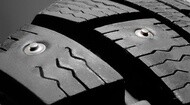
Auto Tips & Advice
Do I need winter tires?
If you frequently encounter snow or ice, or if the temperature consistently approaches freezing, your tires need the extra grip and turning capabilities that only winter tires can deliver. Even if you have 4-wheel drive or all-wheel drive, you still need winter tires on the front and back to conquer the elements and stay safe.
Winter tires are designed to perform better in a wide range of wintry conditions such as wet roads, snow and ice. They also improve your vehicle's grip and performance in these conditions and they shorten your braking distances for better safety.
Braking distance on slippery, cold, wet or icy roads | Michelin Winter Driving Academy
Winter, all-season and summer tires

In cold temperatures, summer tires do not provide the performance that winter road conditions requires. They are made with different materials optimized for warmer conditions and they can, for instance, harden under cold temperature, thus lowering their gripping ability. Summer tires have difficulty gripping the road in snow or icy conditions.
All-season tires are designed to be driven year-round, but if you live in an area with severe winter conditions (heavy snow or ice), they may not be sufficient. All-season tires are designed to perform well in a large range of conditions, but not to handle the worst.
Winter tires can provide you with the extra grip you need to get through deeper snow or ice-covered roads.
Three peak mountain snowflake symbol and "M+S"
Three Peak Mountain Snowflake symbol
Only tires which have the Three Peak Mountain Snowflake symbol (a snowflake inside a mountain) have been tested for use in severe snow conditions. They meet or exceed industry-established severe snow traction performance requirements.
Tires with this marking are what we traditionally call "winter tires".
"M+S" generally means Mud and Snow for All-Season tires
They have been specially designed to improve your car’s performance in moderate winter conditions.

Lifecycle of winter tires

Wear
Winter tires do not wear more quickly in winter conditions when compared to all-season tires. The rubber is different, but comparable in durability. You can fit them early to enjoy maximum benefits.
When should I replace them?
- When wear bar indicator is visible (2/32nds).
See how to measure wear. - After 5 years of usage, you should make sure they are thoroughly inspected at least once per year.
Cost and value
The cost of winter tires is generally equivalent if not less than standard replacement tires on a vehicle. Over the life of your vehicle, you will likely need to purchase at least one new set of tires. Equipping the vehicle with winter tires during the first winter season will represent the same cost in the end but will optimize the performance in treacherous driving conditions with the benefit of added safety.
Put winter tires on all four wheels
For maximum safety and control over your vehicle in cold weather conditions, fit winter tires on all four wheels.
Why not only two tires?
- Fitting winter tires just on the front axle can mean that the rear axle slides more easily. You risk spinning the vehicle under acceleration (rear wheel drive cars) or when turning (front or rear wheel drive).
- Fitting only two winter tires on the rear axle increases the risk of driving straight on when you try to take a turn.
Front vs back tires | Michelin Winter Driving Academy
Find the perfect tire
Enter your vehicle or tire size
We're searching for your tire...
Wait few seconds we're processing your photo
You need winter tires on 4WD (AWD)
AWD vs. 4 winter tires | Michelin Winter Driving Academy
4-Wheel Drive does provide optimized power transmission delivery but minimal assistance in transverse handling and braking situations. With winter tires, you can feel optimized levels of traction during all manoeuvers including acceleration, braking, and handling.
Do I need studded tires?
Do you drive more on icy roads than snowy roads?
Studded tires are the right choice for you.
Do you drive more on snowy roads or a variety of different road conditions?
Non-studded winter tires could be a better choice.

What are studded tires?
Tires with metal studs inserted into the tread to increases grip on ice, making it easier to start and stop on the least friendly road surfaces imaginable.
Studded tires are not ideal for driving on roads that are not covered with ice, as they can increase braking distance, road noise and wear.
Studded tires are not allowed in some states in the United States. These states may completely ban the use of studded tires or only allow their use during certain times of the year. Check with your local officials to ensure studded tires are allowed in your state before you purchase studded tires.

Find a Dealer
Search by
Address, City or ZIP code

